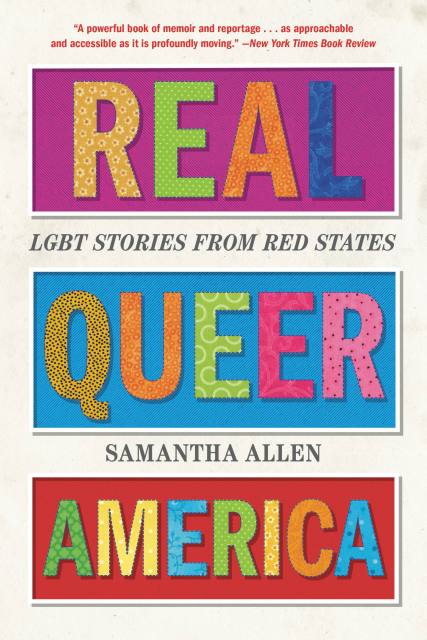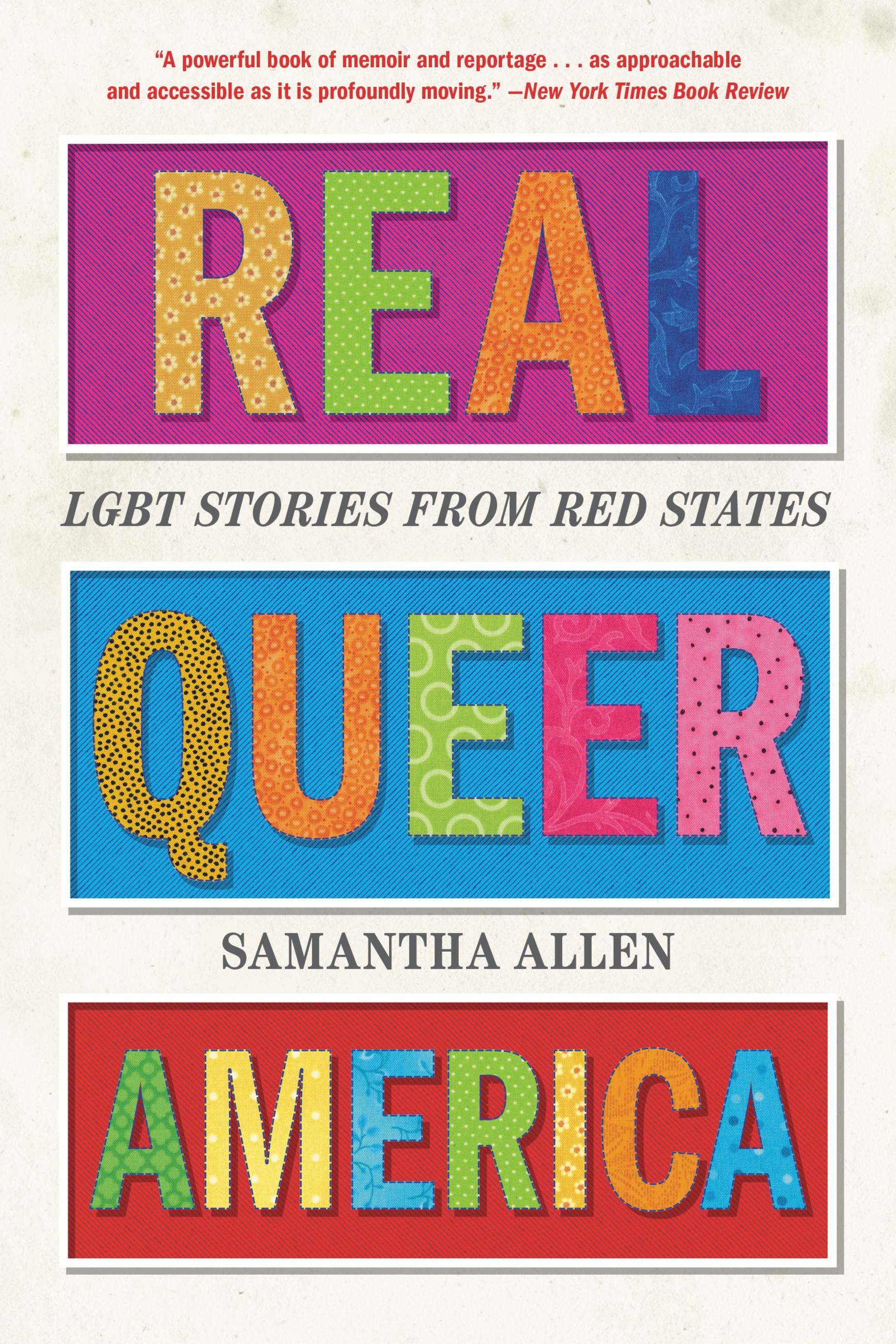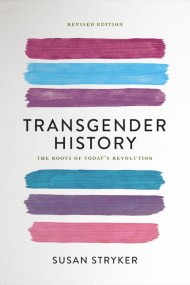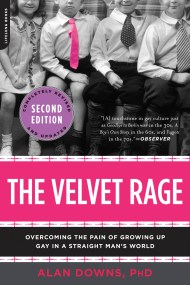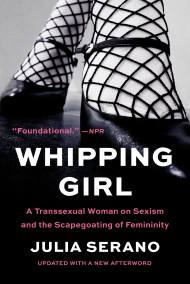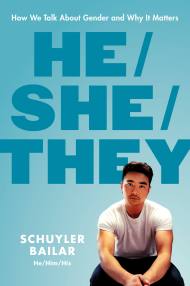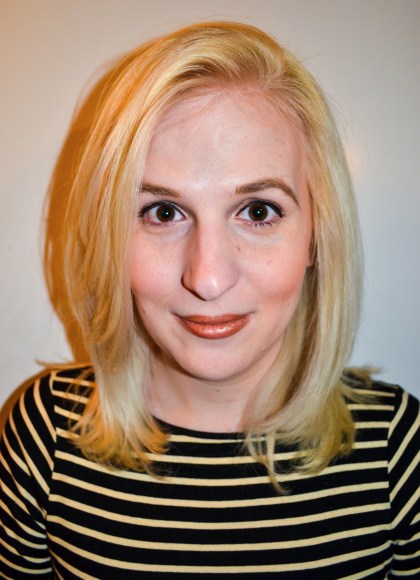Promotion
Use code MOM24 for 20% off site wide + free shipping over $45
Real Queer America
LGBT Stories from Red States
Contributors
Formats and Prices
Price
$13.99Price
$17.99 CADFormat
Format:
- ebook $13.99 $17.99 CAD
- Hardcover $27.00 $35.00 CAD
- Audiobook Download (Unabridged)
- Trade Paperback $19.99 $25.99 CAD
This item is a preorder. Your payment method will be charged immediately, and the product is expected to ship on or around March 5, 2019. This date is subject to change due to shipping delays beyond our control.
Also available from:
A transgender reporter’s “powerful, profoundly moving” narrative tour through the surprisingly vibrant queer communities sprouting up in red states (New York Times Book Review), offering a vision of a stronger, more humane America.
Ten years ago, Samantha Allen was a suit-and-tie-wearing Mormon missionary. Now she’s a GLAAD Award-winning journalist happily married to another woman. A lot in her life has changed, but what hasn’t changed is her deep love of Red State America, and of queer people who stay in so-called “flyover country” rather than moving to the liberal coasts.
In Real Queer America, Allen takes us on a cross-country road-trip stretching all the way from Provo, Utah to the Rio Grande Valley to the Bible Belt to the Deep South. Her motto for the trip: “Something gay every day.” Making pit stops at drag shows, political rallies, and hubs of queer life across the heartland, she introduces us to scores of extraordinary LGBT people working for change, from the first openly transgender mayor in Texas history to the manager of the only queer night club in Bloomington, Indiana, and many more.
Capturing profound cultural shifts underway in unexpected places and revealing a national network of chosen family fighting for a better world, Real Queer America is a treasure trove of uplifting stories and a much-needed source of hope and inspiration in these divided times.
In Real Queer America, Allen takes us on a cross-country road-trip stretching all the way from Provo, Utah to the Rio Grande Valley to the Bible Belt to the Deep South. Her motto for the trip: “Something gay every day.” Making pit stops at drag shows, political rallies, and hubs of queer life across the heartland, she introduces us to scores of extraordinary LGBT people working for change, from the first openly transgender mayor in Texas history to the manager of the only queer night club in Bloomington, Indiana, and many more.
Capturing profound cultural shifts underway in unexpected places and revealing a national network of chosen family fighting for a better world, Real Queer America is a treasure trove of uplifting stories and a much-needed source of hope and inspiration in these divided times.
Genre:
-
"Real Queer America is a book necessary for anyone in -- or allied with -- the queer community, especially those of us who see the bad news day after day. [Allen is] sharing the beauty of the spaces that LGBTQ+ people have carved out for themselves, and she's giving credit where credit is very much overdue, because it's the queer folk who live and stay in red states -- whether by choice or due to a lack of options -- who have to survive there and work to make them better."Los Angeles Times
-
"Samantha Allen's America is filled with buoyant queer people in supposedly red states living their lives with resilience and joy. This moving journey starts out in Utah--but Allen's road ultimately takes the reader to the center of her heart. Surprising, inspiring, and thoughtful."Jennifer Finney Boylan, author of SHE'S NOT THERE and LONG BLACK VEIL
-
"A powerful book of memoir and reportage...It is difficult to capture universality in a way that also celebrates uniqueness. Allen does so through the diversity of the individual stories she uplifts, giving any reader an entry point into LGBTQ lives... [She writes] with a vulnerability and humility as approachable and accessible as it is profoundly moving."New York Times Book Review
-
"It's kind of like a trans Travels with Charley in Search of America, but without Steinbeck's lightly misogynist depictions of women and meandering, stream of consciousness. As Samantha Allen travels across the country's reddest states and perhaps the most unsafe for queer people, she unearths a humanity that the midwest and south are rarely afforded. Queer people exist everywhere, not just cities, and this book is a fierce testament to that."Out Magazine
-
"Allen argues that queerness thrives everywhere, perhaps even more so in states like Indiana, Texas, and Tennessee, precisely because there's still so much advocacy work to do. Allen's openness about her personal story--including growing up Mormon, living an angst-filled double life in Provo, coming out as transgendered, meeting her wife in an elevator at the Kinsey Institute, and undergoing surgery to get a vagina--invites respect. She writes with loving curiosity about other people in the LGBTQ community and blends this with national-level reporting on political and historical LGBTQ issues."Booklist (Starred Review)
-
"I love Samantha Allen! Her voice is an essential part of the movement and a new brand of queer hero for these dark times. In the face of the alt-right and crypto fascists, I say- Queeros Assemble!"Lilly Wachowski, co-writer andco-director of The Matrix trilogy and co-creator ofthe GLAAD Award winning Netflix series Sense8
-
"In this clever combination of easy travelogue and thoughtful exploration of queerness in America, journalist Allen retraces her transformation from a Mormon missionary in Utah to a transgender woman living happily in rural Florida...Queer readers will nod knowingly at the descriptions of finding gay-friendly hangouts and questioning whether public hand-holding is safe in a new area, and readers without that experience will still enjoy Allen's charming, humorous recounting of the ultimate road trip through rainbow-colored America."Publishers Weekly
-
"Real Queer Americais a delight to read...an engrossing journey full of humor, vulnerability, insight, and joy. What results is a beautiful tapestry of, well, the real queer America... Real Queer Americais well-written and well-researched, and it's a blast to read, but perhaps its most essential question is that of how complicit 'blue state' LGBTQ people are in dismissing red states as scary places for queers. The whole world is scary, for queers and for everyone. Perhaps Real Queer Americawill inspire the reader to be more involved in fighting discrimination everywhere."Rewire
-
"Samantha Allen doesn't just have her finger on the pulse of queer and trans America--the pulse runs through her fingers and onto the screen and page. I am always amazed at her capacity to get the story, convey the facts, and yet leave no doubt as to what really matters behind the buzzwords and slogans: real people with real lives you'll be grateful to have encountered."Jay Michaelson, author of GOD VS. GAY?
-
"In her generous, clear-eyed reporting, Samantha Allen invites us to see ourselves for who we really are: a country of queer possibility. Her work proves these American stories are too powerful to ever be kept in their place."Melissa Gira Grant, author of PLAYING THE WHORE
-
"Real Queer America ends on a note of hope, predicting that its portrait of queer lives will eventually become antiquated as America grows more and more inclusive of all genders and sexualities. But this will only happen if people of all kinds choose to create communities where we can thrive together. In giving us humanizing portraits of places that many queer people fear and will not visit, Allen has done much to close this divide, and now we, her readers, must take up this message and manifest it in our own lives."LitHub
-
"Allen is smart-as-hell, but inclusive and impassioned. Hers' might not be the book all the gay boys are talking about in an exclusive NYC salon, but it is the book the rest of us can read aloud at the kitchen table with our queer family and our blood family, with our chosen sisters and our yet-to-be-educated uncles...So many wonderful books get written for the NYC and San Francisco LGBTQ community. I'm glad Samantha Allen wrote Real Queer America for the rest of us."Lambda Literary
-
"[Allen] sheds a light on the struggles and triumphs of rural LGBTQ+ people, and smashes misconceptions about how they live. Part memoir, part journalism, and all heart, this is an important book about queer communities today."BookRiot
-
"Real Queer America might be the best travel book of the year...a must-read for all Americans."Refinery29
-
"Allen's award-winning work as an LGBT journalist for platforms like Fusion and The Daily Beast is both radically empathetic and comprehensively analytical. This is a balance she has upheld admirably in Real Queer America, an exploration of queer communities in conservative parts of the country-communities that are often overlooked in conversations about what it means to be queer, American, or both. Use this title to help you chart the course of your next cross-country road trip."Harper's Bazaar
- On Sale
- Mar 5, 2019
- Page Count
- 320 pages
- Publisher
- Little, Brown and Company
- ISBN-13
- 9780316516013
Newsletter Signup
By clicking ‘Sign Up,’ I acknowledge that I have read and agree to Hachette Book Group’s Privacy Policy and Terms of Use
